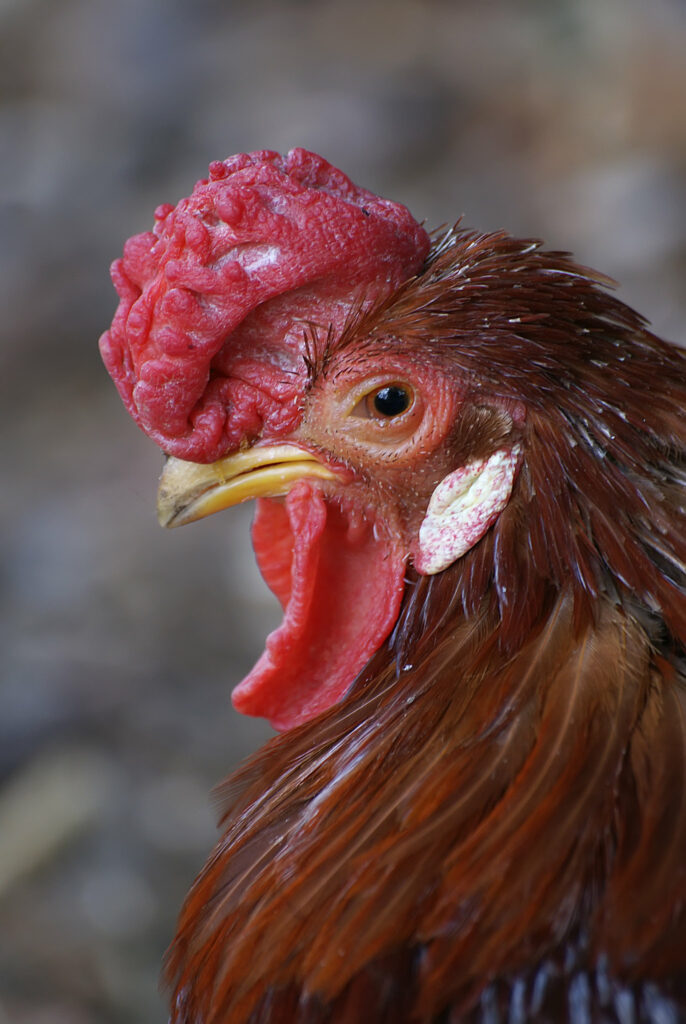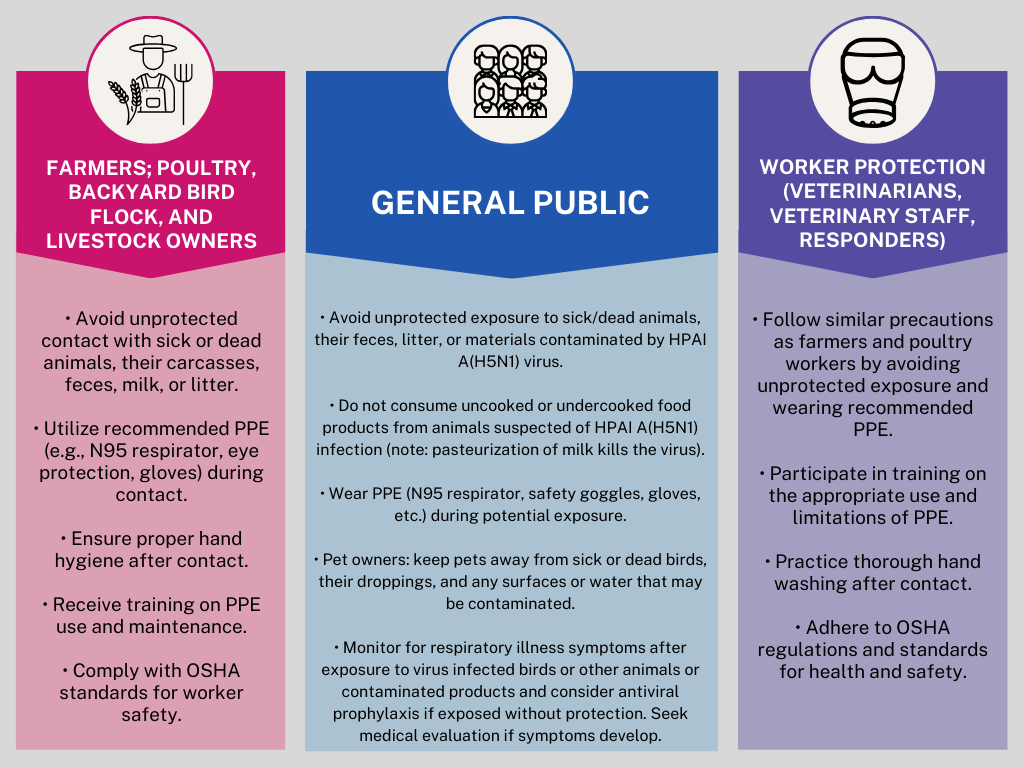Crossing Species: The Rising Threat of H5N1 Bird Flu in the U.S.

The CDC recently confirmed a human case of HPAI A (H5N1) in Texas. Renowned epidemiologist Syra Madad and distinguished virologist Jason Kindrachuk offer tips to farmers, animal caretakers, and the general public on how to avoid contracting and spreading this strain of avian influenza.
Published April 16, 2024
By Syra Madad, D.H.Sc., M.Sc., MCP, CHEP and Jason Kindrachuk, PhD
Avian influenza H5N1, commonly known as bird flu, is a viral infection that affects both domestic and wild birds, along with a wide array of other animals. First identified in 1996, H5N1 has recently re-emerged in a significant panzootic form, specifically clade 2.3.4.4.b, impacting a broad spectrum of wildlife and domestic animals, including more than 200 mammal species.
Concerningly, this has included confirmed infections among numerous species not previously known to be susceptible to H5N1, including marine mammals, as well as in agricultural mammalian species such as cattle and goats. The rapid geographic expansion to all continents except Australia is also concerning. This notable spread across species is particularly alarming due to the potential for severe illness and death in humans as well as economic and food security impacts. This includes both within the agriculture industry as well as among communities reliant on wild game as a food source.
Confirmed Case in Texas
In March, the CDC confirmed a human case of HPAI A(H5N1) in Texas, related to contact with infected dairy cattle, marking the first recorded instance of probable mammal-to-human transmission in the U.S., and the second human case since 2022. Although human infections are rare and no sustained human-to-human transmission has been reported in the U.S., this event underlines the real risk H5N1 poses to individuals in close proximity to infected animals or contaminated environments.
Of note, a single mutation previously found to be associated with adaptation to mammalian hosts was identified within the viral genome sequence isolated from the recent U.S. case (PB2 E627K). However, while this demonstrates the need for continued surveillance and analysis of H5N1 genome sequences, there is no current evidence suggestive of altered human-to-human transmission for the virus or increased antiviral resistance. The CDC currently deems the risk to the broader U.S. populace as low; nevertheless, people with unprotected, extended exposure to infected birds or animals, or to contaminated areas, are at an elevated risk of contracting the virus.
The table below outlines recommended preventive measures for both the general public and those at heightened risk due to their work or recreational activities, aiming to reduce the likelihood of H5N1 infection.


About the Authors
Syra Madad, D.H.Sc., M.Sc., MCP, CHEP is an internationally renowned epidemiologist in special pathogens preparedness and response, biosecurity advisor and science communicator. She serves as the Senior Director of the System-wide Special Pathogens Program at NYC Health + Hospitals, the U.S.’s largest municipal healthcare delivery system. Dr. Madad is a fellow at Harvard University’s Belfer Center for Science and International Affairs where she leads the Women in STEM and Diversity in STEM series; she’s Core Faculty at the National Emerging Special Pathogens Training and Education Center (NETEC), and affiliate faculty at Boston University’s Center on Emerging Infectious Diseases.
Her work focuses on the prevention, preparedness, response, and recovery from infectious disease outbreaks with an emphasis on healthcare and public health biopreparedness. She is known for her innovative strategies, which integrate emergency management principles with epidemiological methods, contributing significantly to the development of robust healthcare systems that can respond to emerging disease threats. You can follow her on X (twitter) and Instagram: @syramadad
Read more from Dr. Madad on the Academy blog: The COVID-19 Pandemic at Year Four: The Imperative for Global Health Solidarity
Jason Kindrachuk, PhD is an Associate Professor, Canada Research Chair, Department of Medical Microbiology & Infectious Diseases, University of Manitoba, Winnipeg, MB, Canada
